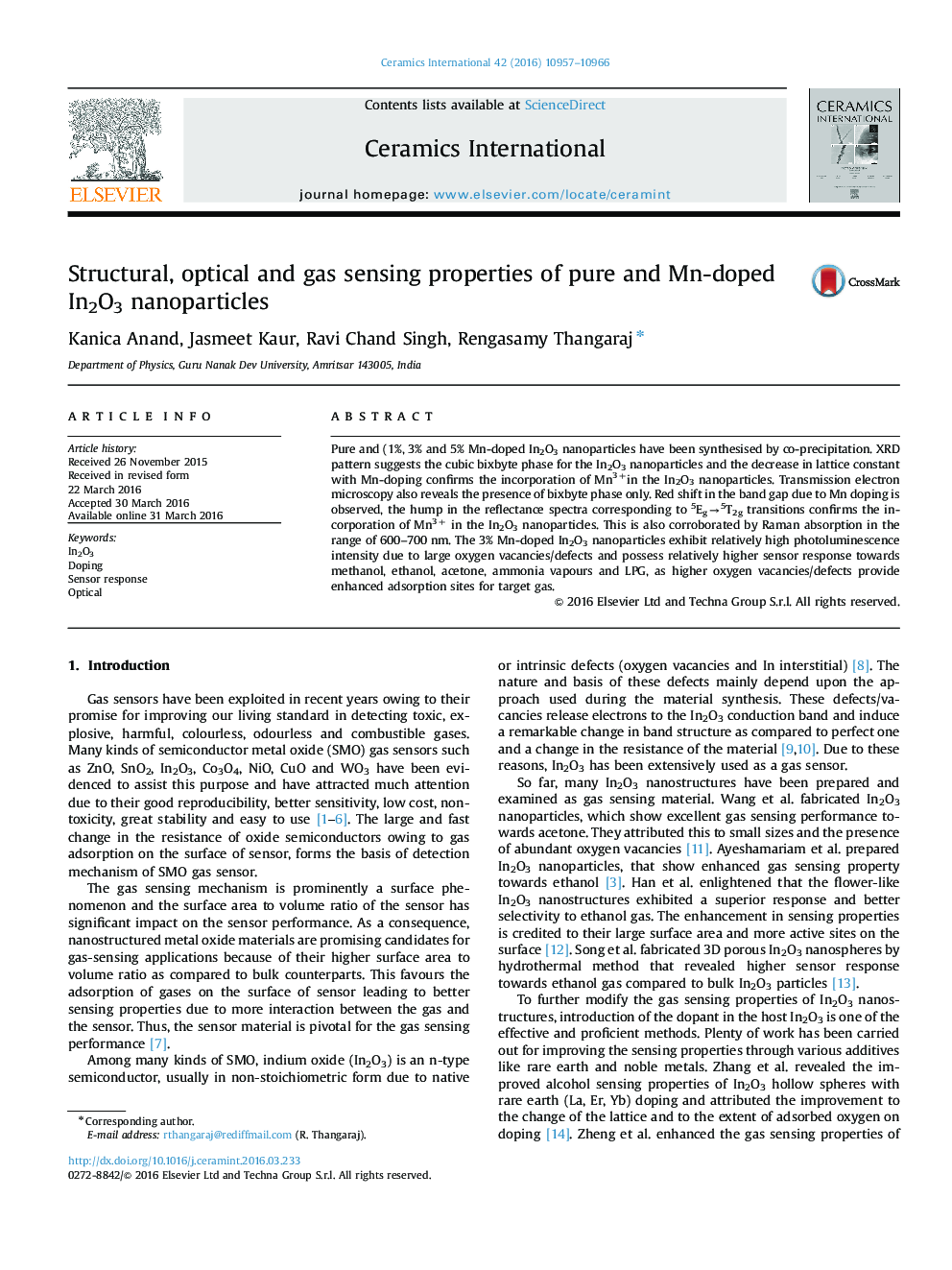| Article ID | Journal | Published Year | Pages | File Type |
|---|---|---|---|---|
| 1458645 | Ceramics International | 2016 | 10 Pages |
Pure and (1%, 3% and 5% Mn-doped In2O3 nanoparticles have been synthesised by co-precipitation. XRD pattern suggests the cubic bixbyte phase for the In2O3 nanoparticles and the decrease in lattice constant with Mn-doping confirms the incorporation of Mn3+in the In2O3 nanoparticles. Transmission electron microscopy also reveals the presence of bixbyte phase only. Red shift in the band gap due to Mn doping is observed, the hump in the reflectance spectra corresponding to 5Eg→→5T2g transitions confirms the incorporation of Mn3+ in the In2O3 nanoparticles. This is also corroborated by Raman absorption in the range of 600–700 nm. The 3% Mn-doped In2O3 nanoparticles exhibit relatively high photoluminescence intensity due to large oxygen vacancies/defects and possess relatively higher sensor response towards methanol, ethanol, acetone, ammonia vapours and LPG, as higher oxygen vacancies/defects provide enhanced adsorption sites for target gas.
